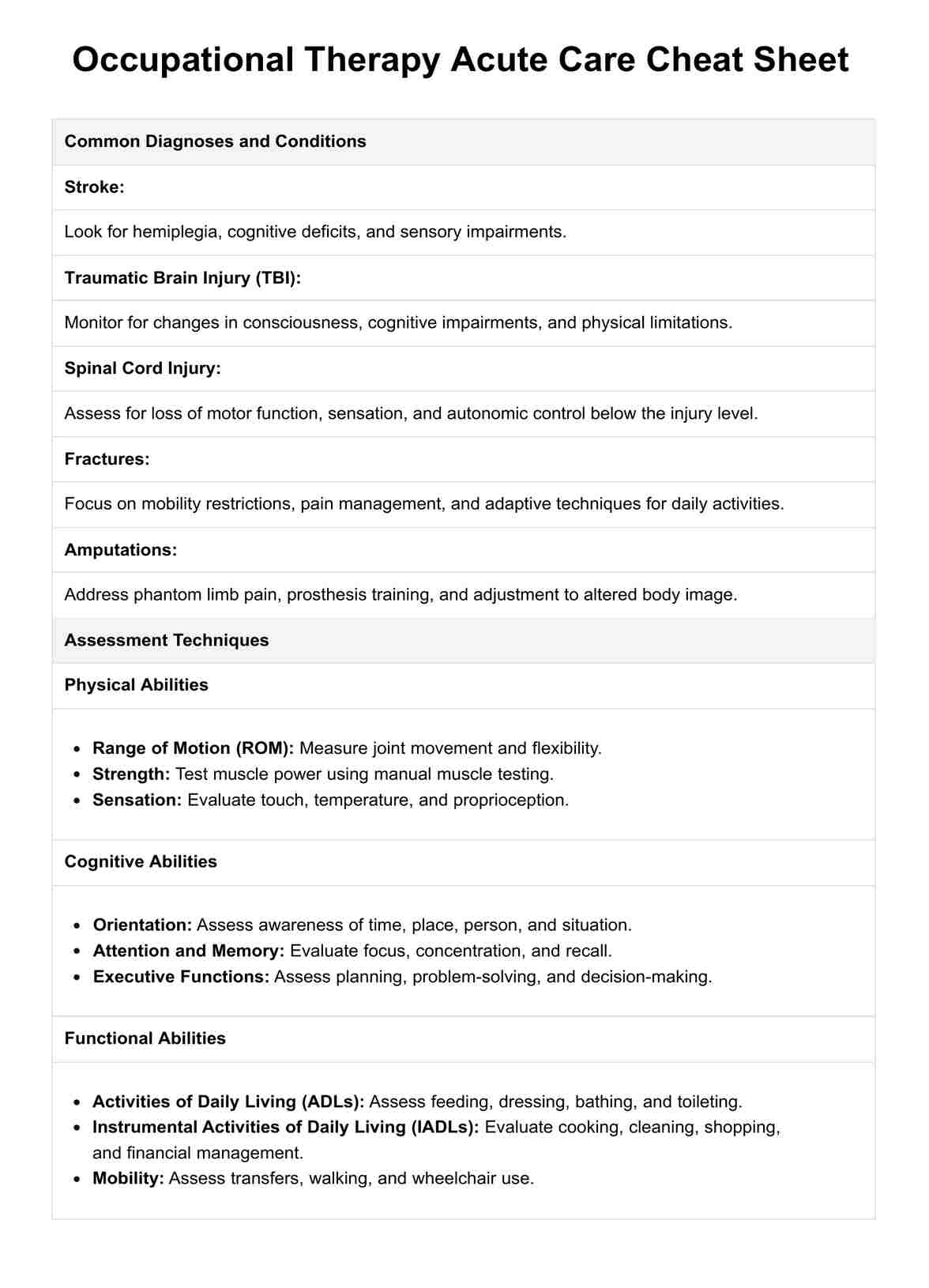Occupational therapy in acute care settings is crucial as it helps patients regain independence and functionality after a sudden illness or injury. By focusing on daily activities and adaptive techniques, occupational therapy supports patients in their recovery process, promoting faster discharge and reducing the risk of hospital readmission.

Occupational Therapy Acute Care Cheat Sheet
Streamline patient recovery with key strategies for enhancing independence in acute settings. Download our free Occupational Therapy Acute Care Cheat Sheet.
Occupational Therapy Acute Care Cheat Sheet Template
Commonly asked questions
The role of occupational therapy in acute care involves assessing patients' functional needs, providing therapeutic interventions to enhance their ability to perform daily activities, and devising personalized rehabilitation plans. Occupational therapists collaborate with other practitioners as a multidisciplinary team to ensure holistic patient care, addressing physical, cognitive, and emotional challenges to improve overall quality of life.
To create cheat sheets in Carepatron, log into your account and navigate to the "Resources" or "Templates" section. Choose "Create New" and select the type of cheat sheet you want to make, such as client information, therapy protocols, or billing codes. Customize it by adding relevant fields and content. Save your cheat sheet for easy access and use it to streamline your workflow and enhance care delivery.
EHR and practice management software
Get started for free
*No credit card required
Free
$0/usd
Unlimited clients
Telehealth
1GB of storage
Client portal text
Automated billing and online payments











